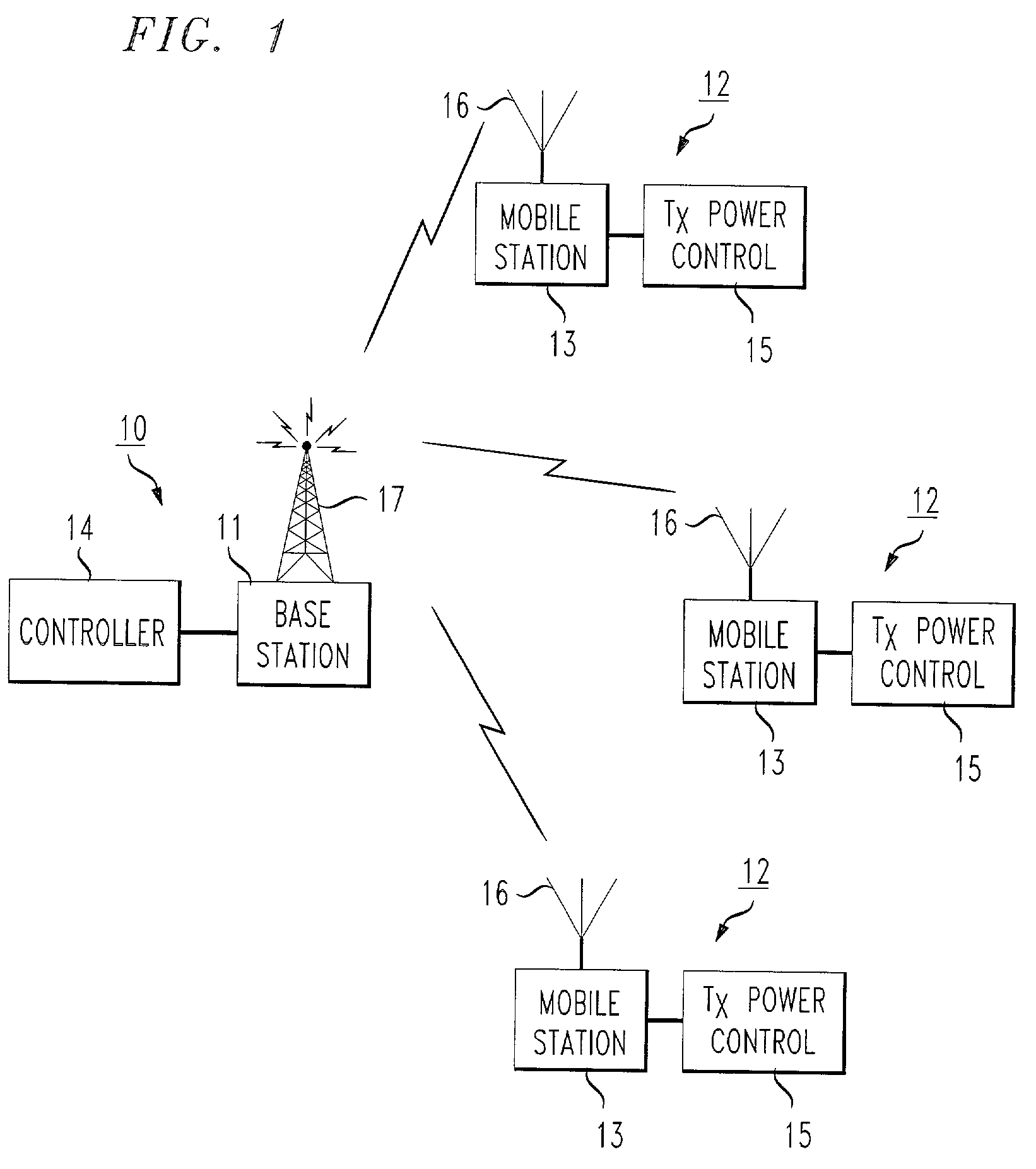Transmit power control for an OFDM-based wireless communication system
a wireless communication system and transmit power technology, applied in data switching networks, instruments, frequency-division multiplexes, etc., can solve the problems of invariably changing, degrading the signal-to-noise ratio, and extremely difficult implementation of such control in ofdm transmission systems, so as to increase or decrease the transmitting power level
- Summary
- Abstract
- Description
- Claims
- Application Information
AI Technical Summary
Benefits of technology
Problems solved by technology
Method used
Image
Examples
Embodiment Construction
[0014]As known in the art, OFDM transmission systems use broadband techniques to transmit data in multiple time-parallel, narrow band sub-channels. Use of Fast Fourier Transforms (FFT) impulse response systems make them relatively easy to implement at the transceiver. In an OFDM transmission, an original digital data stream is multiplexed into multiple parallel data streams which, in turn, are carried in multiple parallel narrow band sub-channels of the broadband OFDM transmission. In the OFDM transmitter, an Inverse Fast Fourier Transform forms a pulse that comprises the data modulated sub-carriers and, at the receiver, a Fast Fourier Transform processor separates the sub-channels into to narrow band carriers. These narrow band sub-carriers are then demodulated to obtain the original data.
[0015]The present invention provides open loop power control in an OFDM system, as generally depicted in FIG. 1, which shows a base station 10 and multiple remote units 12 within a cell or service...
PUM
 Login to View More
Login to View More Abstract
Description
Claims
Application Information
 Login to View More
Login to View More - R&D
- Intellectual Property
- Life Sciences
- Materials
- Tech Scout
- Unparalleled Data Quality
- Higher Quality Content
- 60% Fewer Hallucinations
Browse by: Latest US Patents, China's latest patents, Technical Efficacy Thesaurus, Application Domain, Technology Topic, Popular Technical Reports.
© 2025 PatSnap. All rights reserved.Legal|Privacy policy|Modern Slavery Act Transparency Statement|Sitemap|About US| Contact US: help@patsnap.com



